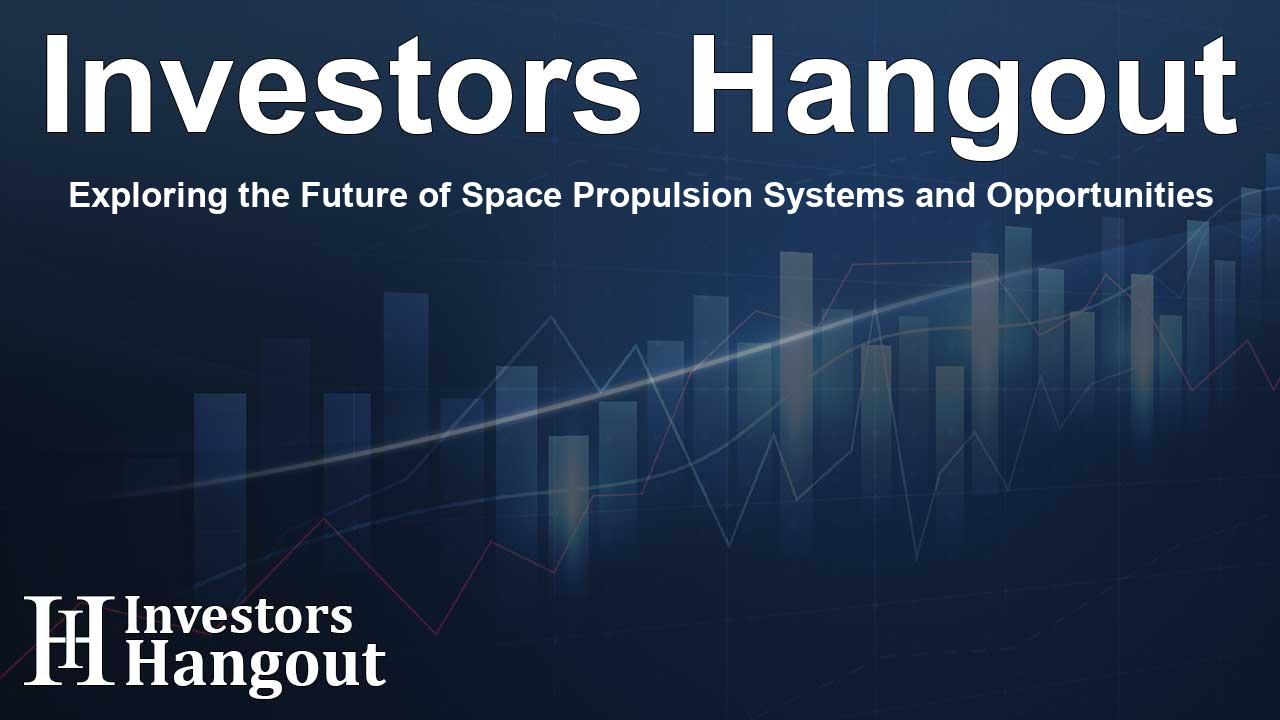Exploring the Future of Space Propulsion Systems and Opportunities

The Importance of Space Propulsion Systems
The growth of the space propulsion market is booming, with an expected rise from USD 13.36 billion to USD 20.02 billion. This impressive surge reflects the increasing reliance on satellite systems and the continuous demand for efficient propulsion technologies. The evolution of satellite launch methods has dramatically changed the landscape, as electric propulsion systems such as ion and Hall-effect thrusters gain popularity for their ability to maintain long-term orbits and perform accurate maneuvers over extended durations.
Revolutionizing the Low Earth Orbit Economy
Underlying Technologies Driving Change
The Low Earth Orbit (LEO) economy represents a beacon of commercial opportunity as satellite propulsion becomes indispensable for cost-effective and operationally sound systems. As more satellite operators adopt electric propulsion technologies, the potential for both reduced launch costs and prolonged mission life becomes evident. This evolutionary shift not only addresses the challenges of deployment but also the ongoing necessity for precise orbital adjustments, ensuring seamless satellite operations.
Enhancing Last-Mile Delivery Services
As demand for satellite services surges, the need for agile and responsive satellite propulsion systems emerges. These systems empower operators to precisely maneuver their satellites, saving both time and resources while improving service deliverability. This dynamic capability is crucial for modern industries, enabling satellites to undertake complex missions ranging from communication to navigation services.
Solid Rocket Motors: A Key Component
Innovations in Propulsion Technology
The solid rocket motors market is witnessing a transformation as manufacturers embrace advancements in eco-friendly propulsion systems. These innovations focus on enhancing efficiency while reducing environmental impacts, a significant requirement in today’s space industry. Companies are also exploring sustainable practices such as using high-efficiency, smokeless propellants, ensuring compliance with evolving regulations.
The Growing Need for Solid Rocket Motors
With the increasing emphasis on deep-space missions, solid rocket motors are gaining traction as critical components in both governmental and private projects. Countries such as India, Japan, and Australia are investing heavily in ignition technologies, which significantly bolster the global market for launches. The use of reusability technologies is further driving innovation within this sector, enhancing the viability of solid rocket motors.
The Breakthrough of Electric Propulsion Systems
Enhanced Efficiency and Longevity
Evolving electric propulsion systems are changing the paradigm for efficient satellite travel. Technologies like Hall-effect and ion thrusters now dominate discussions around the future of propulsion, thanks to their higher specific impulse compared to traditional chemical systems. They decrease fuel usage, allowing for longer mission durations, which extends the practicality of satellite operations significantly.
Focusing on Miniaturization
The miniaturization of electric propulsion technologies offers immense possibilities for small satellites and CubeSats. These advancements point to ongoing technological progress that reflects the growing demand for efficient propulsion solutions while reducing mass and size. The benefits extend beyond performance, allowing for enhanced payload capabilities and operational flexibility.
Unveiling Nuclear Propulsion Systems
The Future of Interplanetary Travel
Nuclear propulsion systems present a novel approach to space travel, potentially revolutionizing the way we explore beyond our immediate solar system. This technology, particularly nuclear thermal propulsion, enables rapid travel to destinations like Mars, significantly reducing mission duration and minimizing astronaut exposure to harmful radiation.
Investments and Future Directions
Government agencies and private enterprises are now focusing on the development of compact nuclear reactor technologies to support long-term missions. Innovations such as NASA’s Kilopower project highlight the potential of these systems for deep-space operations, showcasing the viability of NEP for future endeavors.
Conclusion: The Growing Landscape of Space Propulsion
The advancements in space propulsion technologies are vast and promising, ranging from electric thrusters that have enhanced satellite endurance to solid rocket motors paving the way for reliable launch vehicles. As industries push towards greener solutions, such as cleaner propellants, the future looks bright for sustainable practices in space exploration. In summary, these developments will facilitate groundbreaking missions while shaping a new frontier in space economy, ensuring that a vast realm of possibilities is waiting to be explored by the aerospace industry.
Frequently Asked Questions
1. What is the expected growth rate of the space propulsion market?
The space propulsion market is projected to grow from USD 13.36 billion to USD 20.02 billion at a compound annual growth rate (CAGR) of about 12%.
2. Why is electric propulsion gaining popularity?
Electric propulsion systems provide higher efficiency, operate for longer durations with less fuel and are increasingly adopted due to their excellent performance capabilities.
3. How does satellite propulsion contribute to the economy?
Satellite propulsion enables efficient satellite operation, thereby reducing costs and increasing the viability of satellite services, further driving the commercial potential within the LEO economy.
4. What is the role of solid rocket motors in the industry?
Solid rocket motors are essential for reliability and performance in launch vehicles, especially for deep-space missions and increasing satellite launch capacities.
5. How are advancements in nuclear propulsion shaping space exploration?
Nuclear propulsion systems offer the potential for faster interplanetary travel, making missions more feasible and reducing the duration of human exploration in space.
About The Author
Contact Thomas Cooper privately here. Or send an email with ATTN: Thomas Cooper as the subject to contact@investorshangout.com.
About Investors Hangout
Investors Hangout is a leading online stock forum for financial discussion and learning, offering a wide range of free tools and resources. It draws in traders of all levels, who exchange market knowledge, investigate trading tactics, and keep an eye on industry developments in real time. Featuring financial articles, stock message boards, quotes, charts, company profiles, and live news updates. Through cooperative learning and a wealth of informational resources, it helps users from novices creating their first portfolios to experts honing their techniques. Join Investors Hangout today: https://investorshangout.com/
The content of this article is based on factual, publicly available information and does not represent legal, financial, or investment advice. Investors Hangout does not offer financial advice, and the author is not a licensed financial advisor. Consult a qualified advisor before making any financial or investment decisions based on this article. This article should not be considered advice to purchase, sell, or hold any securities or other investments. If any of the material provided here is inaccurate, please contact us for corrections.
